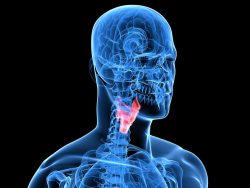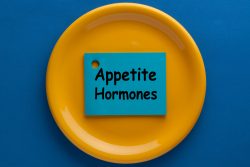Repairing Muscles, Heart and Vocal Cords with Regenerative Medicine
 Through the combination of physics, chemistry, engineering and biology, researchers have developed a biomaterial that is strong enough to repair muscles, vocal cords and the heart. This is a significant advance in regenerative medicine.
Through the combination of physics, chemistry, engineering and biology, researchers have developed a biomaterial that is strong enough to repair muscles, vocal cords and the heart. This is a significant advance in regenerative medicine.
It is a difficult to recover from damage to the heart and vocal cords. The healing process can be a challenge. This is due to the constant tissue movement which has to withstand the beat of the heart or the vibration of the vocal cords. Until now there was not an injectable material that was durable enough to solve this problem.
The researchers developed an injectable hydrogel for wound repair. It is a type of biomaterial that provides an area for cells to grow and live. After injection into the body it forms a porous, stable structure. This allows the growth of live cells which then pass through the material into the injured organ in order to repair it.
To test the strength of the hydrogel, the team used a special machine to mimic the extreme biomechanics of vocal cords. It vibrated at 120 times per second for more than 6 million cycles. The newly developed hydrogel remained intact while current hydrogels fractured into pieces as they were unable to handle the load stress.
The test was a success. Prior to their research, no injectable hydrogels combined both toughness and high porosity. To solve this problem, a pore-forming polymer was added to their formula.
They hope that the hydrogel can be used in the future for implantation in people with vocal cord damage to restore their voice.
The new work opens up avenues for a variety of other applications such as tissue engineering, drug delivery and creating sample tissues for the screening of drugs.
This demonstrates the synergy of mechanical engineering, materials science and bioengineering for the creation of novel biomaterials with exceptional performance. They are looking forward to testing them in the clinic.
Click here to view the original scientific study:
Injectable, Pore-Forming, Perfusable Double-Network Hydrogels Resilient to Extreme Biomechanical Stimulations



 A recent study has shown than exercising at the start of a fast might help maximize health benefits of temporarily going without food and boost overall health benefits.
A recent study has shown than exercising at the start of a fast might help maximize health benefits of temporarily going without food and boost overall health benefits. Through exercise the body produces endocannabinoids which help reduce inflammation. This potentially helps with treatments for diseases such as cancer, arthritis and heart disease.
Through exercise the body produces endocannabinoids which help reduce inflammation. This potentially helps with treatments for diseases such as cancer, arthritis and heart disease. Have you ever wondered if diet has a more important role than drugs for good metabolic health? A new study set out to find whether it was diet or drugs that play a more powerful role in a person’s health.
Have you ever wondered if diet has a more important role than drugs for good metabolic health? A new study set out to find whether it was diet or drugs that play a more powerful role in a person’s health.  Walking is one of the best exercises a person can do to improve their fitness and health benefits. It can improve heart health and a recent study showed a 32% decrease in death from participants. The study was from 2011-2015 where the participants wore a step counting device to record their walking patterns and daily steps for 4-7 days. They added at least 2,000 extra steps a day in uninterrupted sessions. The devices measured the effects of the bouts of these sessions, which lasted for 10 minutes or longer.
Walking is one of the best exercises a person can do to improve their fitness and health benefits. It can improve heart health and a recent study showed a 32% decrease in death from participants. The study was from 2011-2015 where the participants wore a step counting device to record their walking patterns and daily steps for 4-7 days. They added at least 2,000 extra steps a day in uninterrupted sessions. The devices measured the effects of the bouts of these sessions, which lasted for 10 minutes or longer. A new study consisting of Australians and Americans over the age of 70 has shown that alcohol is linked to a reduced risk of cardiovascular disease. There was a decrease in mortality from all causes when compared to no alcohol consumption at all. Protection from heart disease can increase with an average intake of 3.5 to 7 alcohol drinks per week.
A new study consisting of Australians and Americans over the age of 70 has shown that alcohol is linked to a reduced risk of cardiovascular disease. There was a decrease in mortality from all causes when compared to no alcohol consumption at all. Protection from heart disease can increase with an average intake of 3.5 to 7 alcohol drinks per week. A study has shown that a diet which includes LP7, which is a very specific distinct combination of essential acids, might hinder the development of dementia including Alzheimer’s Disease.
A study has shown that a diet which includes LP7, which is a very specific distinct combination of essential acids, might hinder the development of dementia including Alzheimer’s Disease. Researchers have now developed an injectable therapy based on nanofibers that enabled paralyzed mice to walk again. It was developed by Northwestern Univ. and harnesses “dancing molecules” to repair and reverse tissue following a severe spinal cord injury.
Researchers have now developed an injectable therapy based on nanofibers that enabled paralyzed mice to walk again. It was developed by Northwestern Univ. and harnesses “dancing molecules” to repair and reverse tissue following a severe spinal cord injury.  A new study has found that aging rats who were put on a diet of highly processed foods for four weeks showed a strong inflammatory response that also included signs of memory loss. They discovered that adding omega-3 fatty acid DHA reduced the inflammatory effects and prevented problems with memory.
A new study has found that aging rats who were put on a diet of highly processed foods for four weeks showed a strong inflammatory response that also included signs of memory loss. They discovered that adding omega-3 fatty acid DHA reduced the inflammatory effects and prevented problems with memory. A study has found that the amount of the fasting hormone ghrelin rebounds following weight loss. It can help decrease belly fat and also improve a person’s insulin sensitivity. It is stomach derived and stimulates appetite. Levels of ghrelin rise when fasting overnight during sleep. The levels will then fall when a person eats again.
A study has found that the amount of the fasting hormone ghrelin rebounds following weight loss. It can help decrease belly fat and also improve a person’s insulin sensitivity. It is stomach derived and stimulates appetite. Levels of ghrelin rise when fasting overnight during sleep. The levels will then fall when a person eats again.